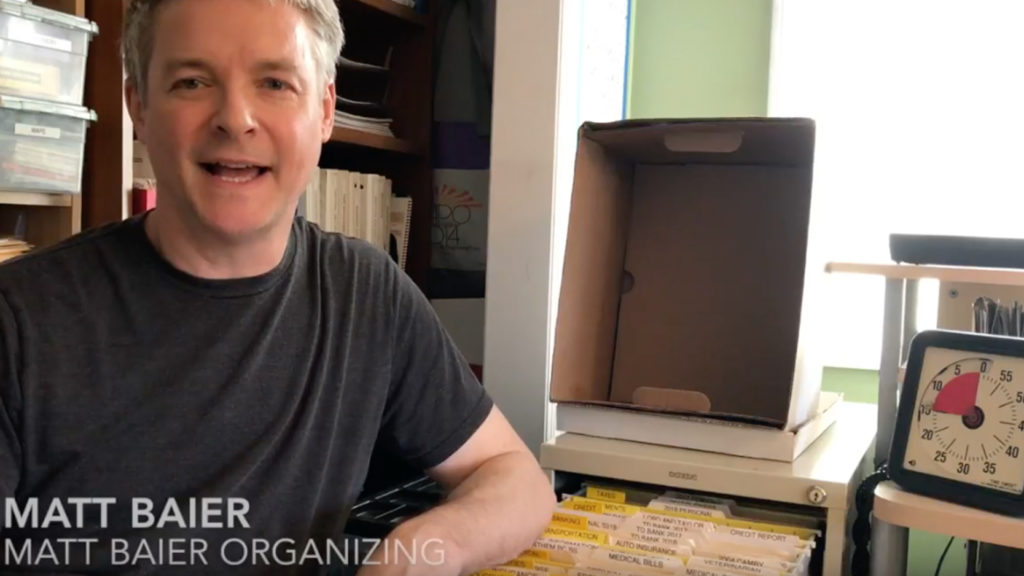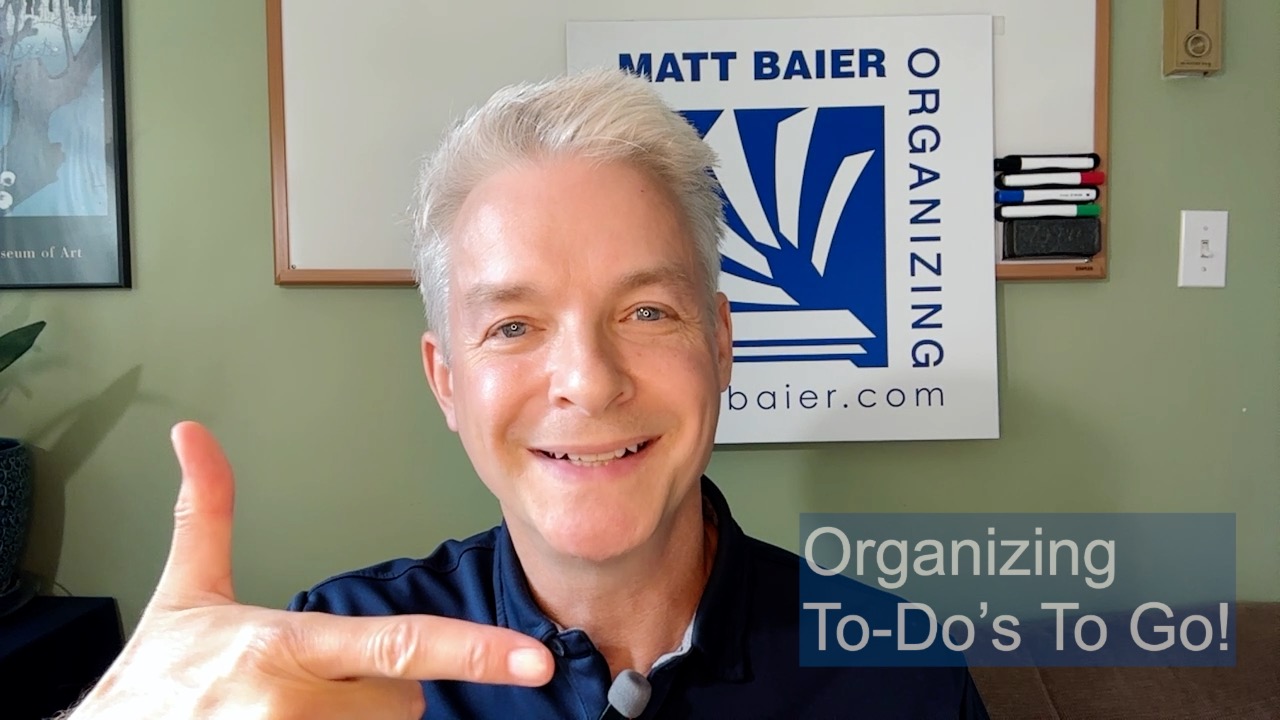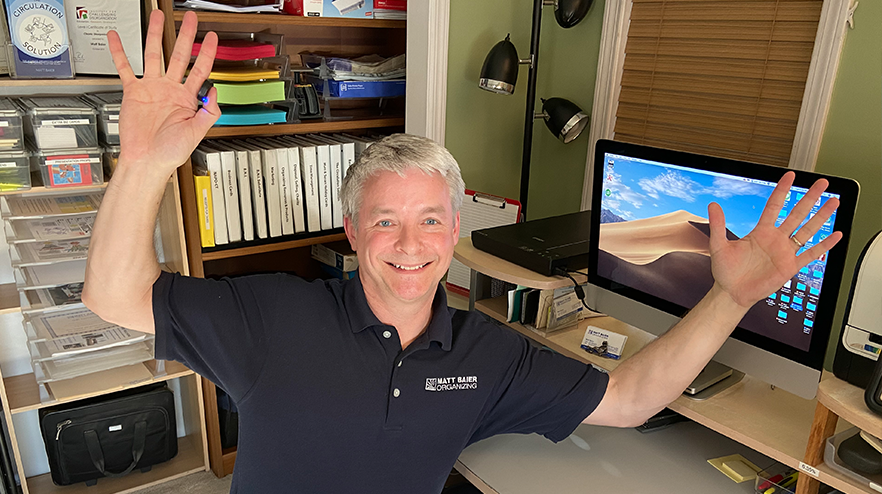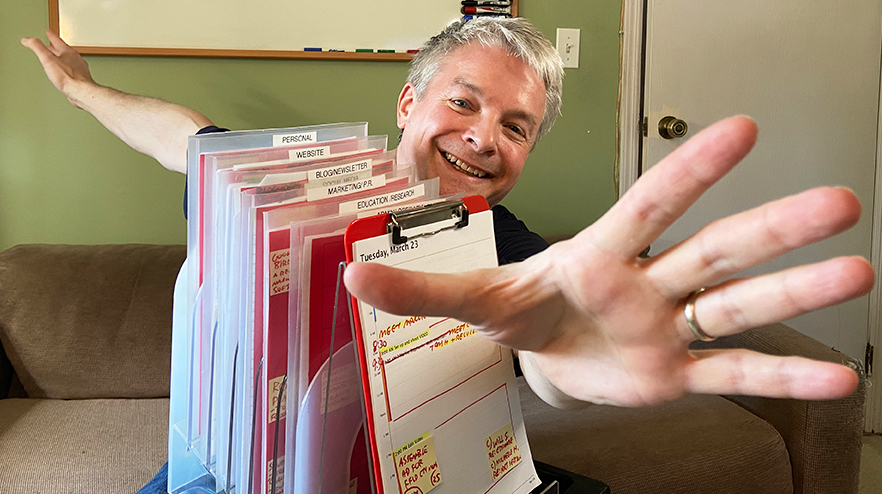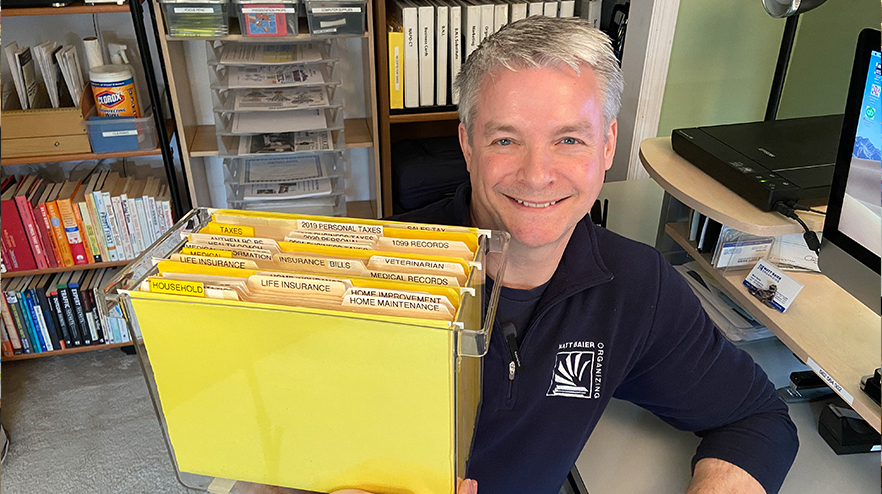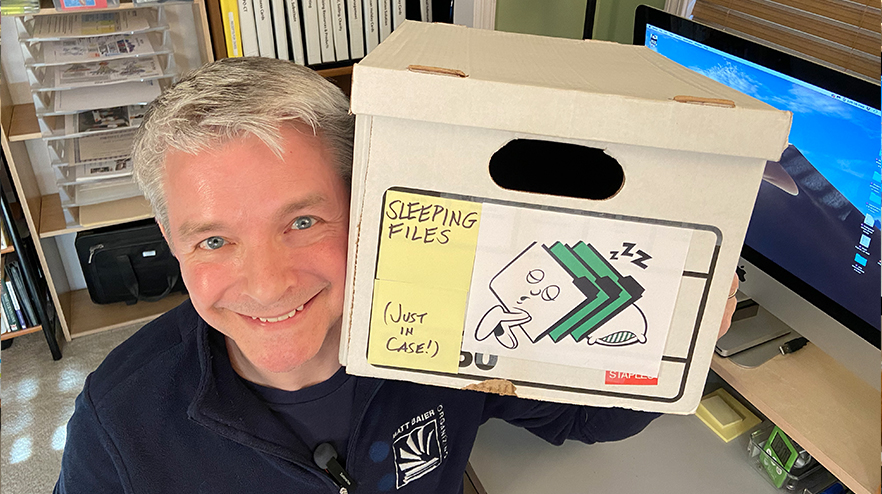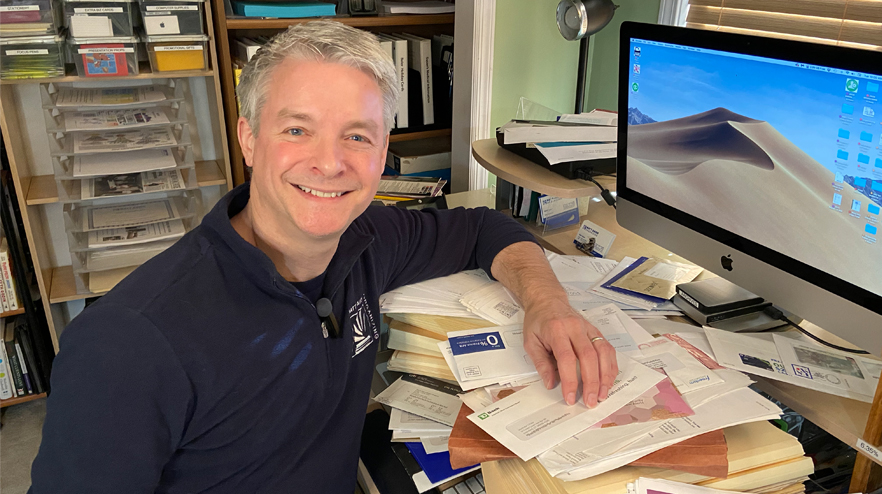Organizing paperwork at home may be easier than you think. There are no shortcuts, but organizing paper is easier is you have a plan. Here’s the thing. Your plan has to be for all of your paper. Having a plan for only some of your paper, is like playing hockey without a goalie. You have to work harder on scoring goals, if the other team keeps scoring goals on your open net.
If you only have a plan for organizing active paper clutter, you also need a plan for organizing archives. Otherwise paper will accumulate, like goals on an undefended net.
Consequently, you will run out of space, for processing your more current paperwork.
Four essential stages
If you are facing a major challenge of how to organize your home filing system, expand your vision. Just focusing on your top priorities alone will not help with organizing your household paper systems. Start by looking at all your paper in four essential stages. Don’t get distracted by bills to pay. Don’t even get distracted by a file’s category. Just look a the stage. Here they are.
1. Running files
Reserve aper for a paper organizing system, that addresses things you want to make a point of acting on. This includes bills to pay, ongoing projects, and daily tasks.
2. Sitting files
This is what people typically think of when they think of how to organize a home filing system. These are current tax year statements, current information, and easy access records. Put another way, these are files you need to be able to find reliably.
3. Sleeping files
These are files you are keeping just in case. Mostly you should keep tax-supporting material in this stage. However, you may also want to keep older financial and medical records. I have covered the subject of rotating files in a video before, but here is a newer (faster) video.
4. Dead files
Dead files are papers that have lost all value. They can be shredded and recycled. You may want to keep some files in the sleeping files indefinitely. With these, you might include legal files and files related to current major purchase. Hold until sold.
Some files may be dead on arrival, in the form of junk mail. However, it is perfectly OK if you want to let your files transition through these four stages. I will cover this final stage in my next post and video.
If you never seem to get your files under control and can never keep them that way, let me know. We can help.
Please Share With Your Community
Related Posts
Testimonials
What some of our clients are saying
Imagine An Organized Home


